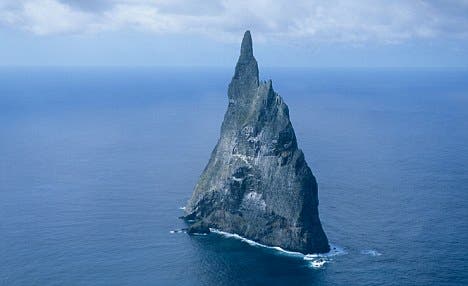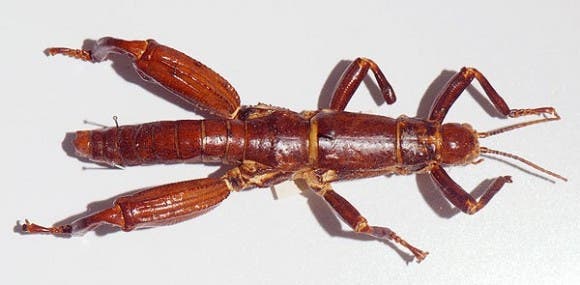During man’s exploits through out history, a great number of species were driven to extinction, either by excessive hunting, habitat destruction, disease or pest introductions and so on. There are currently around 11,000 animal species listed as endangered, and the list is getting ever thicker each day. During the past few decades, as awareness to the hazards of losing some of nature’s greatest treasures increased, some hard working activists and scientists were able to save certain species from being wiped out completely. Sometimes, albeit on extremely rare occasions, some species once deemed extinct for many years simply surfaced again. Such is the case with the tree lobster as well, which despite it being thought extinct for the past 80 years, somehow a group of scientists discovered a group of specimens which were alive and well.
The Dryococelus australis or tree lobster, as it is also called, since it a stick insect that bears a remarkable resemblance to the large marine crustacean, was thought to have been wiped out from its natural habitat of Lord Howe Island, situated in the South Pacific off Australia some 80 years ago. As man populated the island, they also brought along black rats, which killed the tree lobsters to the last individual. Sized around 12 cm in length, the tree lobster was considered the heaviest flightless stick insect in the world.

Thankfully, it has regained its title, after a small colony of the insects was found some 13 miles away from its original breeding ground, on a tiny island called Ball’s Pyramid. The island’s name is well deserved – 1,844ft high, taller than the Empire State Building, Ball’s Pyramid is nothing more than a rocky wasteland. At an altitude of 500ft above the Pacific Ocean, this solitary tree lobster colony was remarkably found around the single plant that had survived on the rock. Climbers who had previously reached the islands’ summit reported seeing fresh droppings on the rock, which spurred biologists’ interest – and the interest was well justified. Just 24 individual specimens were found subsequently, out of which four, two males and two females, were brought back by scientists to shore such that they might try to breed them.
One of the tree lobster pairs died soon after being brought to the lab, while the female in the remaining living pair almost died as well, and would have were it not for the valiant efforts of biologist Patrick Honan, who formulated a calcium nectar mix for the female to feed on. A tragedy was averted and its life was spared, and from it 700 other adult specimens were bred! Currently, 11,376 tree lobster babies are in incubation.
Lord Howe Island Stick Insect hatching from Zoos Victoria on Vimeo.
The biologists’ next problem they need to tackle is how to reintroduce the specimens back to Lord Howe Island. The black rat population would need to be eliminated, which is a very tough task considering their breeding habits, and the local human population will have to understand why the tree lobster needs to be reintroduced in the wild and support the action. Also, how on Earth the tree lobster migrated such a large distance to Ball’s Pyramid remains a yet inexplicable mystery.







